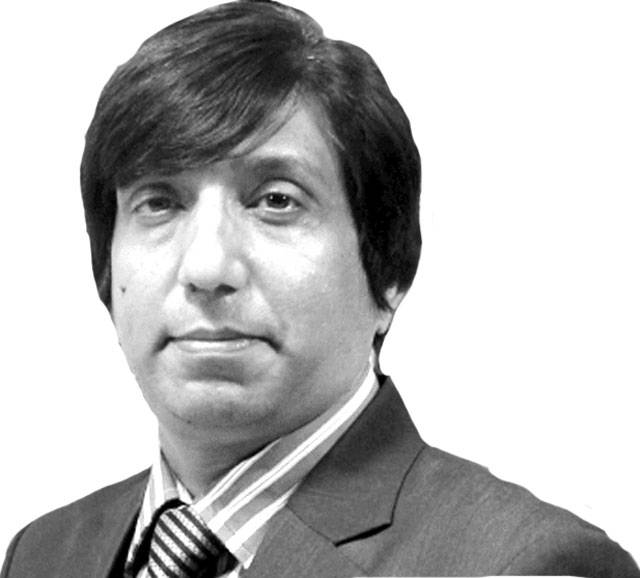India, often termed as ‘mother of democracy’ with the epithet of ‘Shining India’ is actually a sham. In fact, the society is deeply polarised and the phenomenon of Hindutva has scaled new heights of fanaticism. The BJP-led government’s Hindutva ideology has exposed the real face of India, as a fake Union, where the so-called secularism is nothing but a fig leaf. Non-Hindu communities as well as low caste Hindus are being repressed, which has badly damaged its social fabric. Hindu fundamentalism is taking a heavy toll on minorities leading towards increasing communal unrest amongst Indian minorities. This has posed question marks on the viability of India as a nation. The Hindu fanaticism poses a serious menace to the Muslims, the Christians, the Harijans, and the Sikhs, who are now an easy prey at the hands of Hindutva and RSS radicalism.
The slogan of Indian nationalism is the biggest political fraud of the twentieth century, which is constructed to maintain Indian illegal occupation in Indian Illegally Occupied Jammu and Kashmir (IIOJK) and other states. Socio-economic marginalization and attempts to centralise power by the Union government in the 1970s and 1980s generated centrifugal pressures across several regions, which want to have a separate state, union territory or an autonomous administrative division within India.
Evidences are traced to the Naxal-Maoist insurgency erupting in India with the Naxalbari uprsing in 1967 in West Bengal. Later, it also spread to the southern states of India. Their support mainly lies with the tribal population of India, who have often been neglected by the elected government. Freedom movements in northeast India are factual instances that involve multiple armed freedom factions operating in India’s northeastern states (consisting of the seven states like Assam, Meghalaya, Tripura, Arunachal Pradesh, Mizoram, Manipur, and Nagaland). Moreover, the Khalistan freedom movement in Punjab was active in the 1980s and early 1990s. IIOJK has also long been facing an insurgency, especially since 1989.
Today, a Hindu community is in the making whose fundamentalism can only stimulate fundamentalist movements among the minorities and the different states of India. The tensions among the Indian Union began surfacing soon after BJP’s electoral success in 2019, manifested most notably through the refusal of 14 states such as Madhya Pradesh, Chhattisgarh, Punjab, Kerala state, northern state of Rajastha, Maharashtra, southern Andhra Pradesh, eastern state of Orissa to implement the National Register of Citizens and the farmer movement, which emphasized the capitalist character of the current Hindutva-driven state. Citizenship Amendment Act (CAA) 2019, is also the sign of a fractured Indian Union. Critics believe that the CAA along with the National Register of Citizens could become a means of excluding the minority Muslim population of the country.
Rising discontent among Indian minorities, religious polarization, organized communal violence and booming separatist movements in various states depict that the idea of Indian Union, created on deceit and false promises, has been unable to integrate the desperate nationalities in the process of nationhood. For this reason, it is argued that the Indian Union is being weakened, whether it is the Kashmir struggle, Naxalbari movement, the ongoing unrest of the tribal areas, the marginalization of minorities, the curious case of the Maoists, or the embittered relationship rising from the quota system of the upper castes to the rest of society; the Indian state is in constant conflict with her own people.
The governance in India under the BJP regime has transitioned from recognition of diversity in its legal and economic frameworks to a model, which delegitimizes diversity as ‘non-Indian’ and ‘Western’ values with no place in India. That is why, the marginalized class under the caste system is worried for its exclusion from social and economic benefits and at risk of being left behind, leading to its increasing discontent and even anger. This negates the Indian claim to be a secular democracy.
The main threat comes from the rise of Hindutva ideology and its consequences not only for electoral politics, but also for the judiciary and society at large. The modern political ideology of BJP is constructed on that ideology, which is a set of ideas based on caste system that completely undermines the very foundation of a democratic state by rejecting the notion that all citizens are equal. Profoundly, when minorities are assaulted by saffron terrorists, they are often forced to recite ‘Jai Shri Ram,’ a slogan raised for the glorification of Hindu lord Rama, or else are offered a life-or-death choice: to accept Hinduism as their religion or be killed. Under RSS-led state patronage, saffron terror groups have become part of mainstream politics and influence national policy matters.
The war on minorities is a step towards branding the nation as exclusively for Hindus by unleashing the fascist Hindutva agenda. There is a need to awaken the consciousness of the international community against violations of rights of religious minorities in India. The international community should exert pressure on India to refrain from brutal behaviour and massive massacres against religious minorities in the country.
Sunday, May 19, 2024
India’s fascist reality must be unraveled

The writer is a researcher who works at IPRI.
PPP rejects in-house change proposal in Azad Kashmir
2:58 PM | May 19, 2024
PM directs to make arrangements to bring back Pakistani students from Kyrgyzstan
2:10 PM | May 19, 2024
Ishaq Dar’s Kyrgyzstan visit ‘cancelled’
12:59 PM | May 19, 2024
SIFC’s project Green Tourism revolutionizing tourism sector in GB
12:42 PM | May 19, 2024
Punjab CM, Japanese envoy discuss ways to strengthen bilateral trade & investment
12:35 PM | May 19, 2024
NEPRA’s Neglect
May 19, 2024
Colonial Grip
May 19, 2024
Confrontational Politics
May 19, 2024
Sports & Genocide
May 18, 2024
Healing AJK
May 18, 2024
Unsung Heroes of Society
May 19, 2024
Water Shortage in Our Area
May 19, 2024
The AI Trap
May 19, 2024
Continuing Narrative of Nakba
May 18, 2024
Teacher Struggles
May 18, 2024
ePaper - Nawaiwaqt
Advertisement
Nawaiwaqt Group | Copyright © 2024





